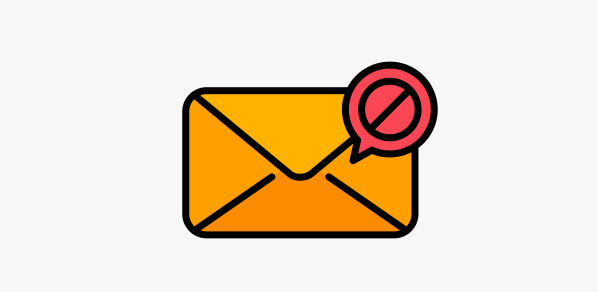About Blocked Emails in Gmail
Gmail's spam filtering system is designed to protect users from unwanted emails. When Gmail identifies an email as spam, it may be blocked, preventing it from reaching your inbox. While this can be helpful in keeping your inbox clean, it's important to understand why emails might get blocked and how to manage your blocked email list.
Why Emails Get Blocked in Gmail
Several factors can contribute to an email being blocked by Gmail:
- Spam characteristics: Emails that exhibit spam characteristics, such as excessive links, unusual formatting, or suspicious content, are more likely to be blocked.
- Sender reputation: If a sender has a history of sending spam or engaging in malicious activities, their emails may be blocked.
- User-defined filters: If you have created filters to block emails from specific senders or with certain characteristics, these emails will be blocked.
How to Find Blocked Emails in Gmail App
To find blocked emails in the Gmail app, follow these steps:
Steps to Locate Blocked Emails in Gmail App
1. Open the Gmail app: Launch the Gmail app on your mobile device.
2. Tap the "Menu" button: Look for the three horizontal lines in the top left corner of the screen and tap on them.
3. Access "Spam folder": Scroll down the list of folders and tap Spam to open the spam folder.
4. Get the Blocked List: You’ll see a list of emails that Gmail has blocked and marked as spam. Select any that you believe might be blocked by your existing filters.
Unblock Emails in Gmail App
If you want to unblock an email sender or domain, follow these steps:
1. Open the "Blocked" list: Follow the steps above to access the blocked list.
2. Find the sender or domain: Locate the sender or domain you want to unblock.
3. Tap the "Unblock" button: Next to the sender or domain, you'll see an "Unblock" button. Tap on it.
The sender or domain will be removed from the blocked list, and emails from them will no longer be blocked.
Recover Blocked Emails in Gmail App for a Cleaner Inbox
While Gmail's spam filtering system is generally effective, there may be instances where legitimate emails are mistakenly blocked. If you believe that an important email has been blocked, you can try the following:
- Check the "Spam" folder: Sometimes, legitimate emails that are borderline spam may be moved to the "Spam" folder. Check this folder for any missing emails.
- Contact the sender: If you're still unable to find the email, reach out to the sender and request a resend.
- Review your filters: If you have created custom filters, ensure that they are not blocking legitimate emails.
By understanding how blocked emails work in Gmail and following these steps, you can effectively manage your blocked list and ensure that important emails are not missed.
Bonus Reading: Backup Gmails for Easy Recovery
Gmail shares 15GB free space with Google Drive, Google Photos, and other Google service, so it is easy to get full and prevent you from receiving any new incoming emails no matter they are blocked or not in your blacklist. Thereby, you can regularly clear unnecessary emails, or move important emails to another location (either local drive or cloud drive) as a backup for an easy and efficient recovery.
In such cases, we highly recommend you trying MultCloud. You can add your Gmail and Outlook account into it, and access all your messages in one interface. Moreover, you can convert those emails into PDF format in bulk and migrate them to the local or cloud drive. For the most accessibility, saving emails to cloud drives is much better.

- Cloud Transfer: Move one cloud data to another without download and re-upload.
- Cloud Sync: Sync data across clouds seamlessly in real time.
- Cloud Backup: Dynamically backup and restore files between clouds.
- Share: Private and password protect share cloud data to others.
- Email Migration: Convert emails to PDF and save to local or even cloud.
- Automatic: Set up a schedule to make task automatically run as preferred.
- Offline: Transfer, sync or backup cloud data online without going through local.
- Efficient: Access and manage all your clouds with a single login.
MultCloud Supports Clouds
-
Google Drive
-
Google Workspace
-
OneDrive
-
OneDrive for Business
-
SharePoint
-
Dropbox
-
Dropbox Business
-
MEGA
-
Google Photos
-
iCloud Photos
-
FTP
-
box
-
box for Business
-
pCloud
-
Baidu
-
Flickr
-
HiDrive
-
Yandex
-
NAS
-
WebDAV
-
MediaFire
-
iCloud Drive
-
WEB.DE
-
Evernote
-
Amazon S3
-
Wasabi
-
ownCloud
-
MySQL
-
Egnyte
-
Putio
-
ADrive
-
SugarSync
-
Backblaze
-
CloudMe
-
MyDrive
-
Cubby
